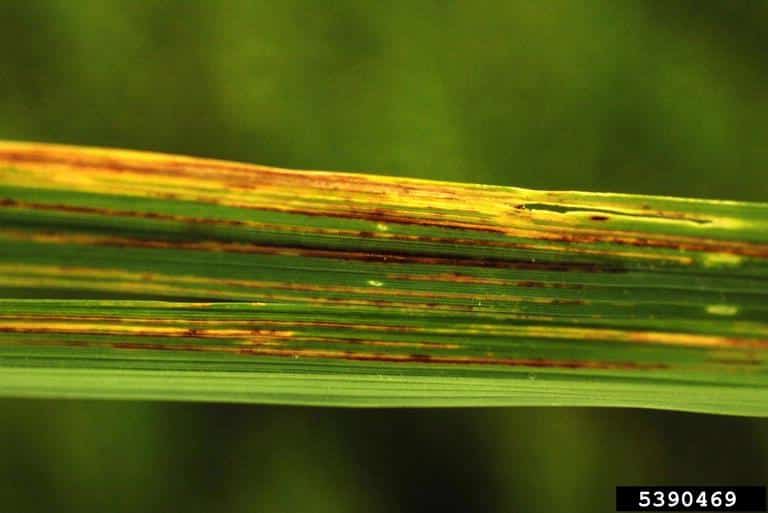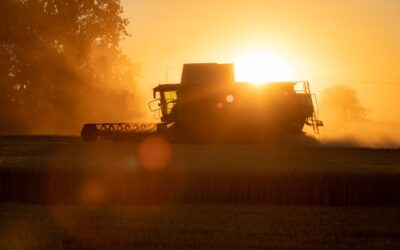Knowing what we don’t know can sometimes be the first step to making significant progress. That certainly is the case with bacterial leaf streak (BLS).
BLS was recently noted as a seedborne disease of possible concern in Canada, affecting cereal crops and especially in irrigated areas. On leaves, symptoms appear as small water-soaked lesions running parallel to the leaf veins. If humidity is high, you might also see a “bacterial ooze” on the lesions, which appear as little yellow milky droplets visible to the naked eye.
Accurate visual identification of bacterial disease is difficult because it doesn’t usually occur in isolation. It often occurs with other pathogens, like tan spot. However, something unique about BLS are the dark fruiting bodies that form on the tan-brown dead tissue giving lesions a speckled/dotted appearance.
Xanthomonas translucens has been identified as the pathogen responsible for BLS and black chaff diseases of small cereal grains, by infection of leaves and glumes respectively. Pathovars of X.translucens are recognized based on their ability to induce disease symptoms on different crop hosts and wild or cultivated grasses. This is a distinctly different pathogen from X. variscola which is responsible for BLS on corn. Both Xanthomonas species prefer areas with abundant moisture, as most bacteria do.
We have been hard at work developing an informative DNA-based test for specific detection of X. translucens pathovars that cause BLS in wheat, barley, rye and triticale. There are, however, challenges at this point. A survey of field samples showed that X.translucens pathovars affecting small grain cereals are a relatively common occurrence.
The amounts vary, from low levels to a much higher, concentrated pathogenic pathovar presence on samples known to come from BLS-symptomatic fields. We have also seen the detected levels change between a seed lot as planted vs. as harvested. Essentially if a large enough sample is tested, we are likely to find some pathogenic X.translucens. But we don’t yet know what level of pathogenic pathovar is of concern for disease development and yield loss.
At this point, we recommend testing for BLS if there’s a concern in your area. As for what those test results will mean to you, that’s something that will become clearer over time as the disease goes through its cycle. There’s no reason for growers to panic; as with any disease, the best approach is testing and best management practices (BMPs) as the picture becomes clearer.
According to the University of Nebraska-Lincoln, BMPs to use in this case include:
Sanitation practices such as cleaning debris from combines and other equipment between fields to help slow its spread to unaffected fields.
In some cropping systems, the use of crop rotation or tillage may help degrade infected debris and reduce the surviving bacteria.
However, the researchers note that neither practice will eradicate the bacterium or eliminate the risk of disease.
Stay tuned as the BLS situation in Canada evolves, and if you’ve had experience with this that you feel would be valuable in adding to the knowledge bank, please email and let me know! Learning more about disease is always a community effort.
Related Articles
Why Canada’s Going to Need More FHB-Resistant Cereal Varieties






